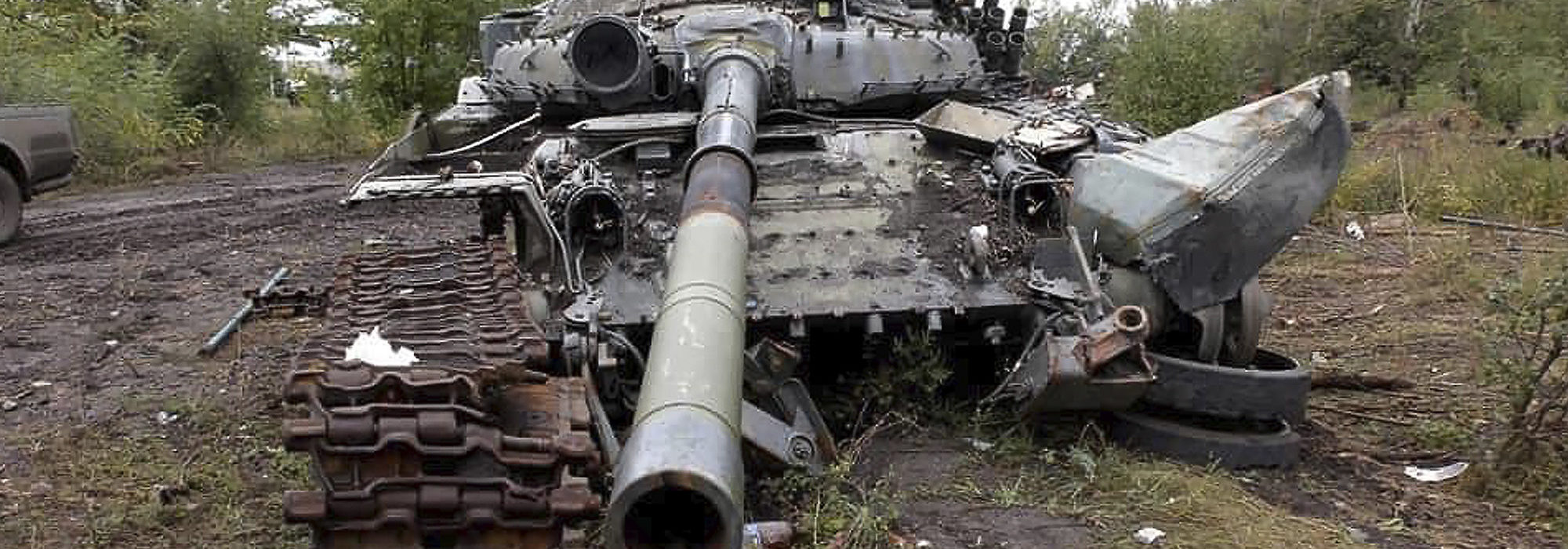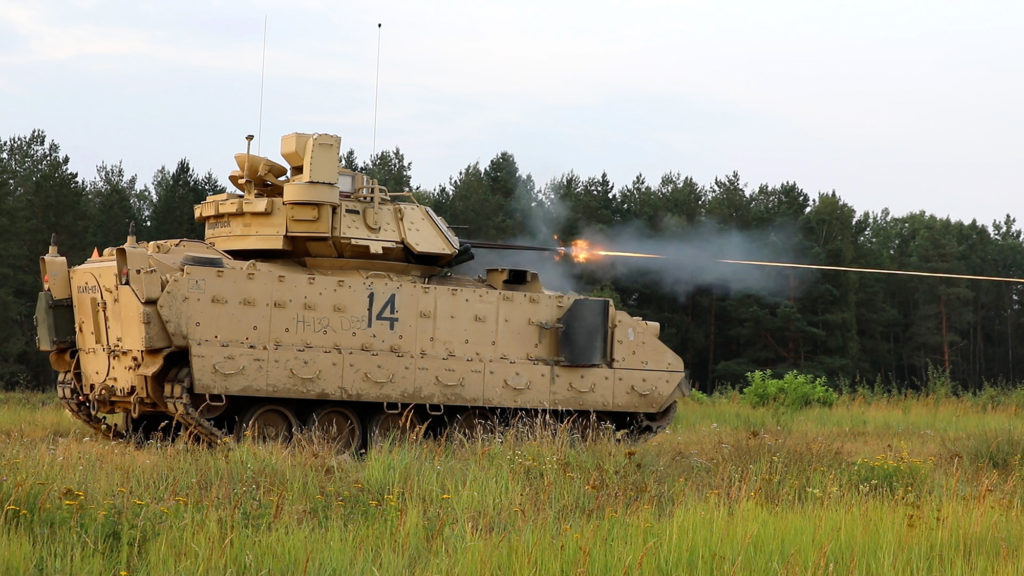DNI Skeptical of Russia Spring Offensive
By John A. Tirpak
R
ussia’s ability to refit and reconstitute for an expected spring offensive in Ukraine is in some doubt, because of its inability to domestically produce the weapons it is using, according to Avril Haines, the Director of National Intelligence. But she also doesn’t see any evidence that Russian President Vladimir Putin will give up his ambitions of “controlling” Ukraine.
In a Dec. 3 interview with NBC’s Andrea Mitchell at the Reagan Defense Forum in Simi Valley, Calif., attended by Air & Space Forces Magazine, Haines said U.S. intelligence expects the current “reduced tempo” of the Ukraine conflict, with Russia withdrawn to the far eastern portions of the country, to continue into the spring.
“Then, once you get past the winter the … question is: what will the counteroffensive look like?” Haines said.
The Intelligence Community expects both Ukraine and Russia to go into a “refit, resupply, … reconstitute” mode, “so they’re prepared for the counteroffensive.” However, “we actually have a fair amount of skepticism as to whether or not the Russians will be, in fact, prepared to do that,” Haines said. Rather, she is more optimistic for the Ukrainians.
I think Putin was surprised by his military’s … lack of performance.
Avril Haines, Director of National Intelligence
Russia’s stockpile of weapons is in question, Haines explained.
“I can’t give you precise numbers in this forum, but … it’s really pretty extraordinary, and our own sense is that they are not capable of indigenously producing what they are expending, at this stage.”
That’s why Russia has been “going to other countries … to try to get ammunition and … we’ve indicated that their precision munitions are running out much faster [than that of the Ukrainians] in many respects.” Russia is known to have solicited weapons from North Korea, China and Iran, which would be compatible with Russian systems because their original design was Russian.
So far, Russia has not gotten “a lot” of artillery from its client states, she said.
The size of Russia’s weapon stockpiles and how much is available for them “to use in different conflicts … are obviously all questions that we look at quite carefully with our allies and partners,” Haines said, hinting that Russia may have significantly limited military options for conventional action beyond Ukraine.
Haines is not certain that Vladimir Putin truly understands what’s happening in Ukraine and may be getting sugar-coated reports from underlings unwilling to anger him.
“This has obviously been an issue that’s been discussed pretty widely. … What I can say is, I think Putin was surprised by his military’s … lack of performance” in Ukraine, Haines offered.
“I do think he is becoming more informed of the challenges that the military faces in Russia, but it’s still not clear to us that he has a full picture at this stage of just how challenged they are,” with regard to “shortages of ammunition, … morale, supply issues, logistics, a whole series of concerns that they’re facing.”
While Putin’s grasp of Russia’s poor status in the war may only now be dawning on him, he’s not changing his plans, Haines said.
“He has not changed his political objectives; at least we don’t see evidence of that,” she said.
If his objective is to retake control of Ukraine, “there are a lot of interpretations of what that means,” Haines added—Putin continues to say Ukraine is part of Russia’s sovereign territory, but “what does that mean for his near-term military objectives? Are they going to be as expansive as they were at the beginning? Or does he at some point recognize that he’s incapable of doing what it is he intended to, originally, and … downscale what it is that he’s willing to accept?”
American intelligence believes “he may be willing to do that on a temporary basis with the idea that he might then come back at this issue at a later time.”
Haines said that Russia’s campaign of strikes at Ukraine’s power infrastructure may be hurting, but isn’t having the desired effect of breaking the country’s will to resist.
“As we watch … the population fight for their country and then see the just outrageous illegal attack on civilian infrastructure, such as the grid [and] gas … heating [and] a variety of other things … we’re not seeing any evidence” of Ukrainian will to resist “undermined … at this point.” The strikes are also calculated to “affect Ukraine’s capacity to … prosecute conflict,” which may have an effect long-term, especially on Ukraine’s economy, which is “obviously suffering very badly.”
Iran has given or sold unmanned aircraft to Russia and has ham-handedly tried to avoid responsibility for the results, Haines said. Iran first denied it, then “said, ‘Well, these were given before the war.’ … They had a variety of different excuses.” Russia is also seeking other kinds of precision munitions from Iran, she said. “That will be very concerning,” she added, but declined to discuss the issue further.
Haines declined to offer estimates of Russian casualties but said both sides are taking fewer losses as the pace of operations slows.
As to China’s role in supporting Russia, Haines said President Xi has been trying to “play … both sides of this game. … They are continuing to work with Russia on a variety of things. They continue to … have meetings, find ways to support [Russia] in international fora to help them manage … efforts to expose what the Russians are doing or provide condemnation. And they are providing different forms of assistance.”
While China has not provided Russia “anything that is determinative of military assistance, … there are things on the margins … [that] concern us and we’ll obviously keep watching this.” She added that there’s “no evidence” that China has been responsible for reigning in Putin’s recent rhetoric on using nuclear weapons.
However, “I think it is fair to say, from our perspective, that Xi’s voice on this is going to be obviously among the most compelling to Putin on this issue.”
Asked if Putin’s position is becoming more precarious, with more outspoken protests about the war—some even coming from oligarchs—Haines said, “We’ve seen increasing … dissent among the elites,” big-city mayors and “more significant figures in Russia” offering “more critical views of the war … than you have in the past.” However, none of it “amounts to likely regime change.”
The dissent from the elites “could shape some of his decision-making,” and the U.S. is trying to understand this dynamic better, she said. Protests in the street don’t seem to influence Putin, she added.
US to Supply Ukraine with Bradleys, New Air Weapons in Latest $3B Aid Package
By Chris Gordon
The Biden administration announced a massive new aid package for Ukraine on Jan. 6, totaling over $3 billion and including armored infantry fighting vehicles, Zuni rockets, and other weapons once considered off-limits.
The Pentagon will send 50 Bradley fighting vehicles, which American defense officials said will help Ukraine push Russian forces back and regain territory in the east and south of the country, as part of a $2.85 billion package from Pentagon stocks. The U.S. will also send $682 million to countries on NATO’s eastern flank, which have depleted their own arsenals to come to Ukraine’s aid. An additional $225 million will be given to Ukraine to “cover wartime requirements” and support the sustainment of previously provided weapons systems, according to the State Department.
The latest package also includes new air capabilities. In a bid to bolster Ukraine’s air force, the U.S. will send 4,000 Zuni rockets, which can be fired at ground targets. The U.S. also recently announced it was sending Joint Direct Attack Munitions (JDAMs) to Ukraine. Previously, the Pentagon had focused on sending AGM-88 High-speed Anti-Radiation Missiles, which could attack Russian surface-to-air missile sites. However, the Zuni and the JDAMs give Ukraine’s air force a new strike capability.
“In terms of providing Ukraine with capability for their aircraft, it’s actually something we’ve been working on for a while,” Laura Cooper, deputy assistant secretary of Defense for Russia, Ukraine, and Eurasia, said in a briefing at the Pentagon. “This is really just the latest in efforts to help them to make their existing aircraft fleet as effective as possible.”
Cooper said the Zuni rockets could be mounted on fixed-wing or rotary-wing aircraft.
“It’s-air to-ground, but it’s at fairly close range,” she said.
The Zuni rockets have laser-guided and unguided versions, and it was not immediately clear which type the U.S. was providing. When asked how Ukraine would employ rockets designed for American aircraft onto aircraft designed in the Soviet Union, Cooper cracked a wry smile.
“I trust our engineers, and I definitely trust the Ukrainian engineers,” she said. And “It is something that is possible.”
In the latest effort to help meet Ukraine’s air defense needs, the U.S. will also provide RIM-7 Sea Sparrow missiles that will be modified for use in Ukrainian Buk launchers.
“It is a creative solution that did require some engineering finesse,” Cooper said of using American surface-to-air missiles in Russian-made launchers. “But we’re very pleased that it will work for the Ukrainians.”
Ukraine has come under attack from Russian drones, cruise missiles, and ballistic missiles, and the U.S. and its allies have scrambled to provide better air defenses.
In a move lauded by the Biden administration, Germany recently announced it would provide an advanced Patriot battery, a system that costs hundreds of millions of dollars and can help protect key areas of Ukraine as Russia seeks to pummel the country into submission from the air during winter. The U.S. pledged one of its prized Patriot systems in December.
“We will continue to support Ukraine’s urgent requirement for air defense capabilities to defend against Russia’s brutal attacks,” Cooper said. “Ukrainian forces are showing an undiminished will to fight to defend their country. Ukraine will continue fighting through the winter with the backing of a large coalition of nations, and we continue to encourage allies and partners to make additional donations to bolster Ukraine’s combat and air defense capabilities.”
The M2A2 Bradley is a tracked vehicle that can carry around half a dozen soldiers into battle. The U.S. will also support the Bradleys with 500 TOW anti-tank missiles and 250,000 rounds of 25-millimeter ammunition, as well as self-propelled artillery for the first time.
The U.S. is still declining to provide tanks to Ukraine, but Pentagon Press Secretary Brig. Gen. Patrick S. Ryder argued the Bradley is “not a tank, but it’s a tank-killer.”
The latest U.S. package includes:
- 50 Bradley infantry fighting vehicles with 500 TOW anti-tank missiles and 250,000 rounds of 25 mm ammunition;
- 100 M113 Armored Personnel Carriers;
- 55 Mine Resistant Ambush Protected Vehicles (MRAPs);
- 138 High Mobility Multipurpose Wheeled Vehicles (HMMWVs);
- 18 155 mm self-propelled Howitzers and 18 ammunition support vehicles;
- 70,000 155 mm artillery rounds;
- 500 precision-guided 155 mm artillery rounds;
- 1,200 155 mm rounds of Remote Anti-Armor Mine (RAAM) Systems;
- 36 105 mm towed Howitzers and 95,000 105 mm artillery rounds;
- 10,000 120 mm mortar rounds;
- Additional ammunition for High Mobility Artillery Rocket Systems (HIMARS);
- RIM-7 missiles for air defense;
- 4,000 Zuni aircraft rockets;
- Approximately 2,000 anti-armor rockets;
- Sniper rifles, machine guns, and ammunition for grenade launchers and small arms;
- Claymore anti-personnel munitions;
- Night vision devices and optics;
- Spare parts and other field equipment.

